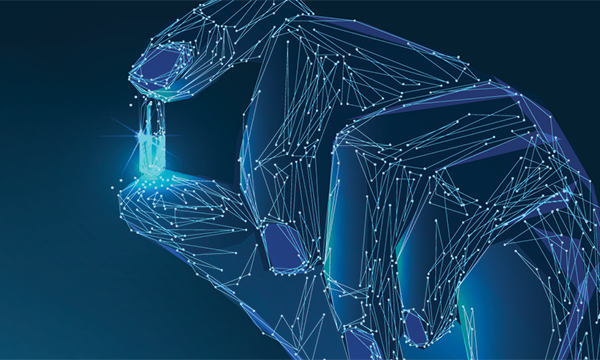Artificial General Intelligence or AGI is like the Swiss Army knife of AI.
Unlike the AI in your phone that just knows how to recommend songs, AGI can learn and understand pretty much anything a human brain can.

Imagine an AI that can paint like Picasso in the morning, solve complex mathematical equations in the afternoon, and then whip up a gourmet meal in the evening. That’s Artificial General Intelligence for you!
| Key Takeaways: 1. AGI Capabilities: AGI can learn and understand a wide range of tasks, unlike narrow AI which is limited to specific functions. 2. Potential Impact: AGI could revolutionize various fields, from climate change solutions to advancements in medicine and daily life enhancements. 3. Technological Foundations: Involves machine learning, deep learning, neural networks, cognitive computing, and natural language processing. 4. Data and Computing Power: Relies on vast amounts of data and significant computational power. 5. Ethical and Philosophical Questions: Raises issues about the rights of thinking machines and the implications of AGI surpassing human intelligence. 6. Privacy and Security Concerns: Includes challenges related to data privacy and maintaining human control over AGI. 7. Governance and Regulation: Requires careful governance and regulation for ethical development and use. 8. Predictions and Roadmap: Expert opinions vary, with some predicting imminent breakthroughs and others foreseeing a longer development timeline. 9. Potential Breakthroughs: Quantum computing and brain-computer interfaces could significantly advance AGI development. 10. Ethical Responsibilities: The development and deployment of AGI must be managed responsibly to ensure safety and beneficial outcomes |
AGI vs. Narrow AI: What’s the Difference?
Now, you might be thinking, “Isn’t all AI the same?”
Most AI today is what we call Narrow AI. These are like your one-trick ponies.
They’re brilliant at the one thing they’re programmed to do – like playing chess or translating languages – but ask them to do anything else, and they’re useless.
AGI, on the other hand, is more like a jack-of-all-trades.
It’s designed to learn and adapt to a wide range of tasks, just like us humans. It’s not limited to one specific task or field.
Why AGI Matters for the Future
So, why is Artificial General Intelligence such a big deal? Well, it’s about potential.
The possibilities with Artificial General Intelligence are endless. It’s like having a super-smart buddy who can learn anything and help solve the world’s toughest problems.
From tackling climate change to revolutionizing medicine, Artificial General Intelligence will literally be a game-changer.
But it’s not just about solving big problems. Artificial General Intelligence could change our everyday lives too.
Imagine personal assistants that don’t just set reminders but offer intelligent advice on everything from managing finances to planning your next vacation.
That’s the kind of future AGI could make a reality.
In short, AGI isn’t just another tech trend. It’s the future of technology, reshaping how we live, work, and interact with the world.
And that is why we should sit up and take notice.
Artificial General Intelligence Basics: Early AI Concepts
Picture this: it’s the mid-20th century, computers are as big as rooms, and some brilliant minds are pondering, “Can machines think?”
This was the birth of AI as a field.
We had mathematicians like Alan Turing asking big questions about machine intelligence. The Turing Test was his brainchild, which is a test to see if a machine can fool us into thinking it’s human.
Spoiler: we’re still working on it, although we’re very, very close.
In these early days, AI was all about mimicking human decision-making. It was like teaching a toddler to walk; the first steps were shaky.
Researchers were creating algorithms, trying to get machines to solve basic puzzles and play simple games. It was more about potential than practicality.
Milestones Along the AI Journey
Fast forward a bit, and the AI world started picking up steam. There were a few standout moments that really got people talking.
- Chess Champion Toppler: In 1997, a computer named Deep Blue beat world chess champion Garry Kasparov. That was a “drop the mic” moment for AI. It showed that machines could not only play games but also beat us at them.
- Jeopardy! Genius: Then came Watson, IBM’s brainy AI, who won Jeopardy! in 2011. This wasn’t just about trivia; it was about understanding language, a huge leap for AI.

These moments were like the AI world flexing its muscles, showing what it could do.
Artificial General Intelligence: From Narrow AI to Dreaming of AGI
While all this was happening, something bigger was brewing.
We had all these AIs excelling in specific tasks, but they were like brilliant savants, super good at one thing but not much else.
Enter the dream of AGI.
People started asking, “What if we could create an AI that didn’t just excel in one thing but could learn anything?”
That’s like the difference between a specialist doctor and a medical prodigy who’s a master of all trades.
This shift was big – it meant rethinking what AI could be.
It was no longer about programming a machine to do one task; it was about creating a machine that could teach itself a variety of tasks.

The pursuit of AGI is like the ultimate puzzle. It’s about creating a machine that can think, learn, and understand like a human, but at superhuman levels.
Imagine a machine that could do everything from composing symphonies to discovering new scientific principles to finding cures of diseases.
That’s the AGI dream.
Machine Learning and Deep Learning in Artificial General Intelligence
First up, machine learning (ML) and deep learning (DL). These are like the heart and soul of modern AI.
ML is all about teaching computers to learn from data, kind of like how you learn to catch a ball – practice makes perfect.

It’s the idea that machines can learn from experiences, adjust to new inputs, and perform tasks without being explicitly programmed for every little thing.
Deep Learning takes this a notch higher. It’s like machine learning on steroids.
Deep learning uses structures called neural networks (more on these bad boys in a sec) to make sense of massive, complex datasets.
It’s the secret sauce behind things like voice recognition in your smartphone or those eerily accurate recommendations on Netflix.
Neural Networks & Artificial General Intelligence
Now, onto neural networks. These are fascinating because they’re inspired by our brains.
Neural networks are a series of algorithms that try to recognize underlying patterns in a way that’s similar to how our brains work.
They’re the reason AI can do things like recognize your face in a photo or understand what you’re saying.
In the context of AGI, neural networks are crucial.
They provide the framework for machines to learn and adapt across a wide range of tasks, from translating languages to diagnosing diseases.
Cognitive Computing and Natural Language Processing In Artificial General Intelligence
Cognitive computing is another piece of the puzzle. It’s about creating AI that can think like us and understand our world.
It’s not just processing information; it’s about understanding, reasoning, and learning from it.
Tied closely to cognitive computing is Natural Language Processing (NLP).
Ever wondered how virtual assistants understand your questions?
That’s NLP at work.
It’s about teaching machines to understand and interpret human language – not just the words, but the context and subtleties too.
Big Data and Computational Power – The Fuel For Artificial General Intelligence
Last but not least, let’s talk about big data and computational power.
These are like the fuel and engine that power AI. Big data refers to the insanely huge amounts of data generated every day.
This data is like gold for AI; it’s where machines get the information they need to learn and make decisions.
But all this data is useless without the computational power to process it.
That’s where advancements in computing, like more powerful processors and cloud computing, come into play. They provide the muscle to crunch through big data and make AI smarter.
Understanding Intelligence: From Human to Artificial
First off, what even is intelligence?
When we talk about human intelligence, it’s a mix of learning, reasoning, problem-solving, perception, language understanding… the list goes on.
Translating this into AI, we’re looking at creating machines that can do all these things, not just as programmed tasks, but with an understanding and adaptability that mimics human smarts.
The big question in AGI is, how do we get machines to this level of intelligence?
It’s not just about loading a computer with information; it’s about giving it the ability to learn and think.
It’s like the difference between a book (filled with information but static) and a human (who can learn, understand, and apply information in new ways).
Philosophical and Ethical Considerations In Artificial General Intelligence
Now, let’s get philosophical. Creating AGI isn’t just a technical challenge; it’s a minefield of ethical and philosophical questions.
Like, if we create a machine that can think, does it deserve rights?
What happens if AGI surpasses human intelligence – do we end up with a Skynet (from the “Terminator” movies) situation?

There’s also the responsibility of using AGI ethically.
It’s all fun and games until someone creates an AGI that decides to hack the stock market or perhaps start an army of drones.
We need to think about how to regulate AGI, ensure it’s used for good, and put safeguards in place.
It’s a bit like teaching a super-smart kid – you want to guide them to use their powers for good, not evil.
The Role of Consciousness and Self-Awareness
This is where things get really trippy.
Can we create an AGI that’s not just intelligent but also conscious?
Does it know it exists?
Does it have feelings?
This isn’t just academic musing; it has real implications on how we interact with AGI.
If AGI becomes self-aware, the way we treat it changes. It goes from being a tool to a kind of digital entity with its own rights and needs.
It’s a huge ethical question and one that we’re still far from answering.
Who’s Who in Artificial General Intelligence: Research
In the world of AGI, there are some real rockstars. We’re talking about institutions and researchers who are pushing the boundaries of what’s possible.
- Top Institutions: Think of places like OpenAI, DeepMind, and MIT’s Computer Science and Artificial Intelligence Laboratory. These are the big guns in AI research, constantly churning out groundbreaking work.
- Leading Minds: Then you’ve got folks like Sam Altman (co-founder of OpenAI and now a Microsoft employee following his shock sacking by OpenAI’s Board of Directors and his subsequent re-hiring 5 days later), Demis Hassabis (co-founder of DeepMind), Yoshua Bengio, and Yann LeCun. These are the celebrities of the AI world, the brains behind some of the most advanced AI research.
Cool Stuff They’re Working On
The projects these guys are working on? Mind-blowing.

- OpenAI’s GPT Series: You have heard of GPT-3 and GPT-4, the language model that can write essays, poems, and even code. It’s a glimpse into how sophisticated AI language understanding is becoming.
- DeepMind’s AlphaGo and AlphaFold: AlphaGo was the program that beat the world champion at Go, a game way more complex than chess. Then there’s AlphaFold, predicting protein structures – a huge deal for understanding diseases and developing drugs.

Bumps on the Road to Artificial General Intelligence
Now, it’s not all smooth sailing. There are some pretty significant challenges and limitations in AGI research.
- Understanding Human Intelligence: We’re still trying to fully understand human intelligence. How do you build something when you’re not 100% sure what it’s supposed to look like?
- Computational Power and Data: The amount of computational power and data needed for AGI is staggering. We’re talking about processing and learning from an enormous amount of information.
- Ethical and Safety Concerns: As AI gets more powerful, the risks increase. How do we ensure AGI will be safe and ethical? It’s like teaching a super-smart child – you want to make sure they grow up to do good things.
The current state of AGI research is a blend of incredible advancements, brilliant minds pushing the envelope, and some real tough nuts to crack. It’s an exciting, sometimes daunting, but always fascinating journey.
We’re at a point where the possibilities seem endless, but so do the challenges. And that’s what makes the pursuit of AGI so thrilling.
Economic Impacts: Automation, Workforce, and New Industries
- Automation on Steroids: With AGI, we’re not just talking about robots assembling cars. Imagine AGIs managing entire supply chains, optimizing logistics, or conducting financial analysis with superhuman efficiency. It’s like having an army of ultra-efficient workers who don’t need coffee breaks.
- Workforce Revolution: Sure, some jobs might become obsolete, but AGI could also create new roles we can’t even imagine yet. It’s a bit like the industrial revolution – scary but also full of opportunities.
- Birth of New Industries: Just as the internet spawned entire sectors, AGI could do the same. Think about industries focused on AI ethics, AGI-enhanced education, or even AI-driven entertainment. It’s a whole new frontier!
Social Changes: Education, Healthcare, and Entertainment
- Education Reimagined: AGI could mean personalized learning experiences, adapting to each student’s pace and style. Imagine a virtual tutor who knows exactly what you struggle with and how to help you.
- Healthcare Revolution: AGI could help diagnose diseases, suggest treatments, or even assist in research for cures. It’s like having a super-doctor who’s read every medical book ever written.
- Entertainment Transformed: In entertainment, AGI could create hyper-realistic video games, personalized movies, or music that adapts to your mood. Talk about immersive experiences!
Ethical and Moral Implications
- Decision-Making Dilemmas: Who’s responsible when an AGI makes a harmful decision? How do we encode ethics into AGI? It’s a whole new ethical playground.
- Privacy Concerns: As AGIs process massive amounts of data, privacy becomes a huge issue. It’s like having a super-smart friend who knows a bit too much about you.
- Control and Autonomy: Keeping control over AGIs is crucial. We don’t want a scenario where the AGI decides it knows better than its human creators.
Long-term Prospects: Utopian and Dystopian Scenarios
- Utopian Dreams: In the best-case scenario, AGI solves our toughest problems. World hunger, climate change, disease – AGIs could help us tackle them all, leading to a kind of golden age for humanity.
- Dystopian Fears: On the flip side, there’s the fear of losing control. If AGIs surpass human intelligence, could we end up in a scenario where they’re running the show? It’s the classic sci-fi cautionary tale.
The potential applications and impacts of AGI stretch as far as the imagination goes. It’s a mix of exciting, promising, and, yes, a bit scary prospects.
But one thing’s for sure – the journey towards AGI is bound to reshape our world in ways we’re just beginning to grasp.
From economic revolutions to social transformations and ethical conundrums, the road to AGI is paved with both incredible promise and profound questions. It’s an adventure, and we’re all in it together.
Artificial General Intelligence: Ethical and Safety Considerations
Now let’s wade into the deep and sometimes murky waters of ethics and safety in the world of AGI. It’s like navigating a spaceship through an asteroid field – tricky, but absolutely crucial. From keeping AGI under our control to protecting our privacy, there’s a lot to unpack here.
The Control Problem and AI Alignment
- Keeping the Genie in the Bottle: The control problem is all about making sure we can keep AGI under human control. It’s like having a super-powerful genie; you want to make sure it grants wishes in a way that’s safe and beneficial.
- Aligning AI with Human Values: Then there’s AI alignment – ensuring AGI’s goals and decisions are in line with human values and ethics. It’s a bit like teaching a super-intelligent child what’s right and wrong, but way more complex because, well, it’s a machine.
Artificial General Intelligence: Privacy Concerns and Data Security
- The Peeping Tom Problem: As AGI systems process huge amounts of data to learn and make decisions, they might end up knowing more about us than we’re comfortable with. Ensuring privacy in the age of AGI is like trying to keep a secret from someone who knows you inside out.
- Fort Knox for Data: Then there’s the issue of data security. As AGI becomes more integrated into our lives, the risk of data breaches grows. We need to protect this data like it’s the crown jewels, because in a way, it is.
Governance and Regulation of Artificial General Intelligence Development
- Who Holds the Reins?: Governance in AGI is about deciding who gets to develop and control these technologies. It’s like figuring out who gets to drive the spaceship – you want someone responsible and wise at the wheel.
- Creating the Rulebook: Regulation is another biggie. We need laws and guidelines to ensure AGI is developed and used ethically and safely. It’s like setting the rules of the road for AGI development to make sure the journey doesn’t end in a crash.
In a nutshell, the ethical and safety considerations around AGI are a complex tangle of control issues, privacy concerns, and the need for solid governance and regulation.
It’s about balancing the incredible potential of AGI with the responsibility to use it wisely and safely.
Like any great power, AGI comes with great responsibility, and navigating this landscape will be one of the biggest challenges as we move forward into an AI-driven future.
It’s a journey that requires not just technical expertise, but also a deep understanding of human values, ethics, and the collective good.
The Future of Artificial General Intelligence
This is where we get to dream big, speculate a bit, and listen to what the smart folks are saying about where we’re headed.
Predictions and Expert Opinions
- The Who’s Who of Predictions: From Elon Musk warning about AI’s potential dangers to Ray Kurzweil’s optimistic visions of human-AI integration, experts are divided. It’s like some are seeing a tech utopia on the horizon, while others are bracing for a Black Mirror episode.
- Timeline Toss-up: As for when we’ll achieve true AGI, predictions are all over the map. Some say it’s just a few decades away, while others think we’re still a century or more from cracking it. It’s like guessing the release date of the next world-changing gadget – everyone’s eager, but no one’s quite sure.
The Roadmap to Achieving Artificial General Intelligence
- Stepping Stones to Superintelligence: The journey to AGI is more marathon than sprint. We’re likely to see incremental advances – better algorithms, more sophisticated neural networks, and gradual improvements in machine learning.
- Cross-Disciplinary Collaboration: This road will also require collaboration across fields – neuroscience, cognitive science, computer science, and even philosophy. It’s like assembling a superhero team where each member brings a unique skill to the table.
Potential Breakthroughs and Game-Changers
- Quantum Computing: Quantum computers could be a game-changer. With their ability to process vast amounts of data at incredible speeds, they might just give us the computational firepower needed for AGI.
- Brain-Computer Interfaces: Imagine linking human brains directly to computers. This could not only augment human intelligence but also provide insights into creating AGI.
- Self-Improving AI: A real watershed moment would be creating AI that can improve and update itself. It’s like having a software that doesn’t just get updates from developers, but writes its own better, smarter versions.
The future of AGI is a potpourri of predictions, hopes, fears, and immense possibilities. It’s a blend of gradual advancements and potential big leaps.
Like any frontier, it’s filled with unknowns, but one thing’s for sure – the journey towards AGI will be one of the most exciting and impactful adventures of our time.
Whether it’s in 30 years or 100, the day we achieve AGI will mark a turning point in human history, and the path we take to get there will be just as important as the destination.




